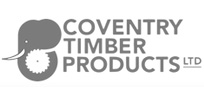With various options available in the market, such as MDF, Plywood, OSB3, Marine Plywood, Birch Ply, Elliotis Ply, and Moisture Resistant MDF, it can be overwhelming to make the right decision. In this comprehensive guide to plywood and sheet materials, we will walk you through the different types of timber sheet materials and provide valuable insights on how to choose the right one for your specific job. So let’s dive in and explore the world of timber sheet materials!
How to Choose the Right Timber Sheet Material for Your Job
When selecting a timber sheet material for your project, it’s essential to consider factors like durability, moisture resistance, strength, appearance, and cost. Each type of timber sheet material has its unique characteristics, making it suitable for specific applications. Let’s take a closer look at each of these materials and their key features to help you make an informed decision.
Medium Density Fibreboard (MDF)
MDF, or Medium Density Fibreboard, is a popular choice for interior projects and furniture manufacturing. It is made by compressing wood fibres and resin under high pressure, resulting in a dense and uniform sheet material. Here are some key features of MDF:




